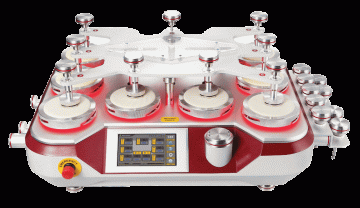Zoning technique: When bulk is not homogeneous, a number of sub-samples must be taken at random from different places in the bulk. Question is how much and how many times should be taken from the different position of the bulk of loose fibres like cotton. It certainly depends on the heterogeneity of the bulk/fibre bales.
A comparatively large sample (2 ozs bulk) is drawn from the bulk and then divided into four parts. 16 small tufts are taken from each part randomly and after that, each tuft is halved four times. Each tuft is halved and one half is discarded at random; the retained half is again divided into two and half of that discarded. This process is repeated until getting 16 wisps from each part. Next, these wisps are combined to form a tuft and each tuft is again divided into four parts. A new tuft is obtained by combining a part of each of four tufts. The sample is mixed again by doubling and drawing and a quarter of the sample is taken out from each tuft to form the final sample. Zoning technique has been graphically illustrated as below-
Reference: A Practical Guide to Textile Testing by K. Amutha (Woodhead Publishing)
Texpedi.com
Check out these related articles:









